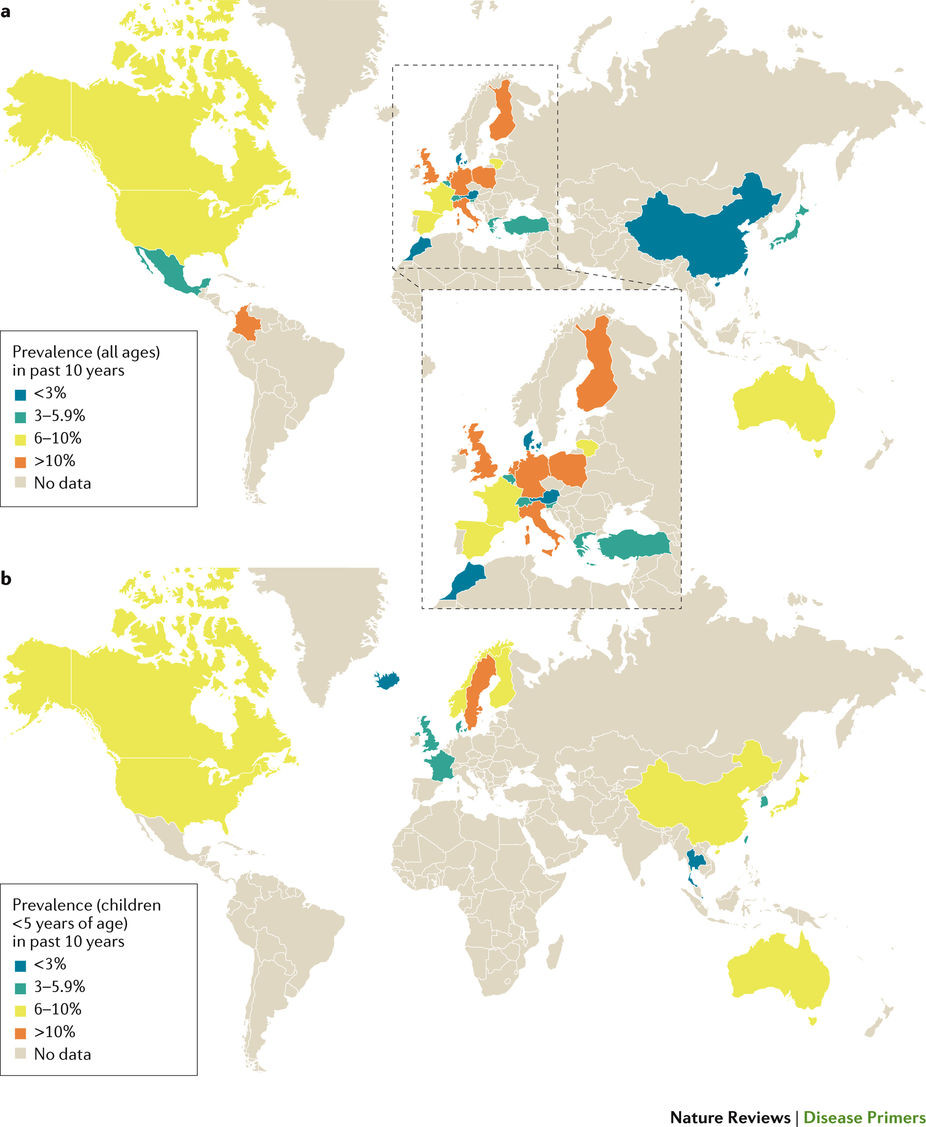食物アレルギー
Food allergy
2018年1月4日 Nature Reviews Disease Primers 4 : 17098 doi: 10.1038/nrdp.2017.98

食物アレルギーでは、消化管だけでなく皮膚や肺に、さまざまな臨床症状が現れるが、なかでもアナフィラキシーショックは最も劇的な症状で、時に死に至ることもある。本疾患では、食物抗原によって惹起される免疫グロブリンE(IgE)依存性反応あるいは非IgE依存性反応に対する臨床的および免疫学的寛容が破綻しているが、基礎研究に加えて、トランスレーショナル研究や臨床研究が大きく進歩したことによって、食物アレルギーの免疫学的機構の解明が進んだ。これにより、生活習慣、食生活および母子相互作用が、腸内微生物叢の質的および量的組成を含めて、食物アレルギーの発症に大きく影響することが明らかになった。これらの要因が最も強く影響を及ぼすのが乳児期であることから、「二重抗原曝露仮説」のような、食物アレルギーの蔓延を説明する仮説が立てられている。このような仮説をもとに、患者の体内でアレルゲンに対する脱感作や寛容を確立させる予防戦略の研究が活発化した。現在、多くの臨床試験で、アレルゲン非特異的治療法も検証されており、今後の食物アレルギーの治療では選択肢がさらに広がるだろう。
PrimeView
このPrimeViewは、有望な予防戦略を考える上で必要な、食物アレルギーの発症リスクに関する主な仮説について取りまとめる。
本Primerの図解サマリー
Food allergies manifest in a variety of clinical conditions within the gastrointestinal tract, skin and lungs, with the most dramatic and sometimes fatal manifestation being anaphylactic shock. Major progress has been made in basic, translational and clinical research, leading to a better understanding of the underlying immunological mechanisms that lead to the breakdown of clinical and immunological tolerance against food antigens, which can result in either immunoglobulin E (IgE)-mediated reactions or non-IgE-mediated reactions. Lifestyle factors, dietary habits and maternal–neonatal interactions play a pivotal part in triggering the onset of food allergies, including qualitative and quantitative composition of the microbiota. These factors seem to have the greatest influence early in life, an observation that has led to the generation of hypotheses to explain the food allergy epidemic, including the dual-allergen exposure hypothesis. These hypotheses have fuelled research in preventive strategies that seek to establish desensitization to allergens and/or tolerance to allergens in affected individuals. Allergen-nonspecific therapeutic strategies have also been investigated in a number of clinical trials, which will eventually improve the treatment options for patients with food allergy.

